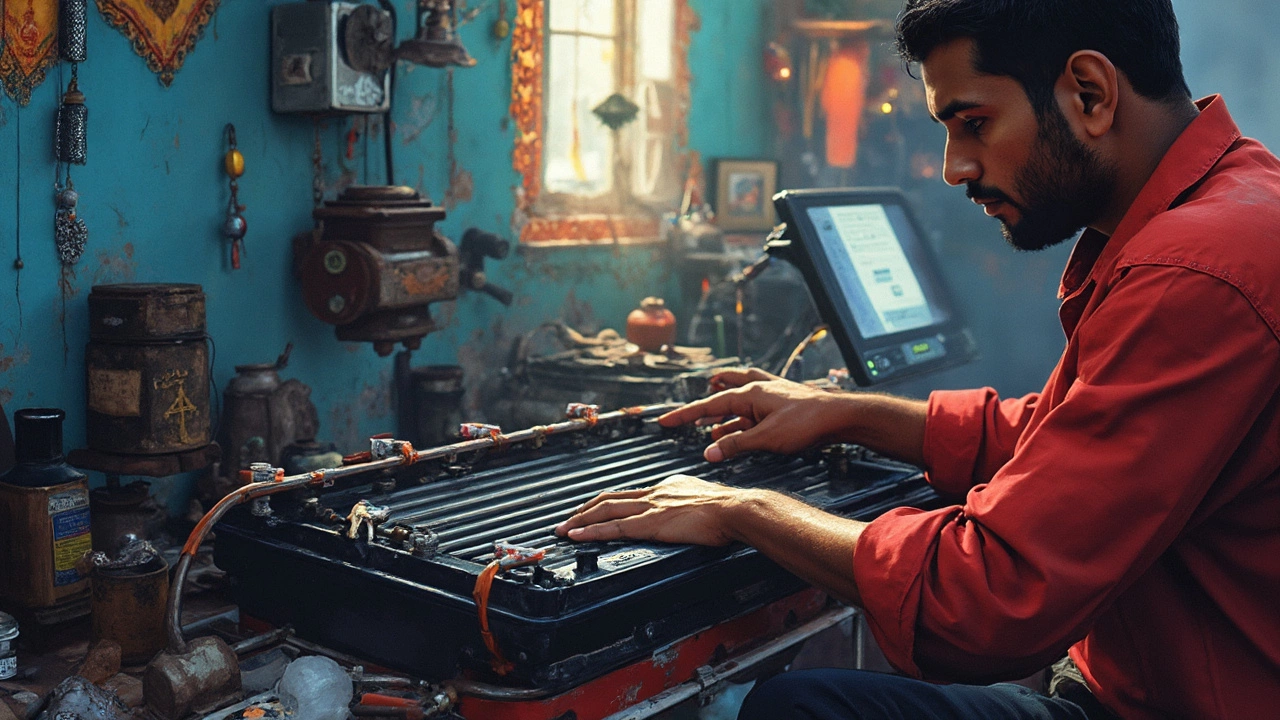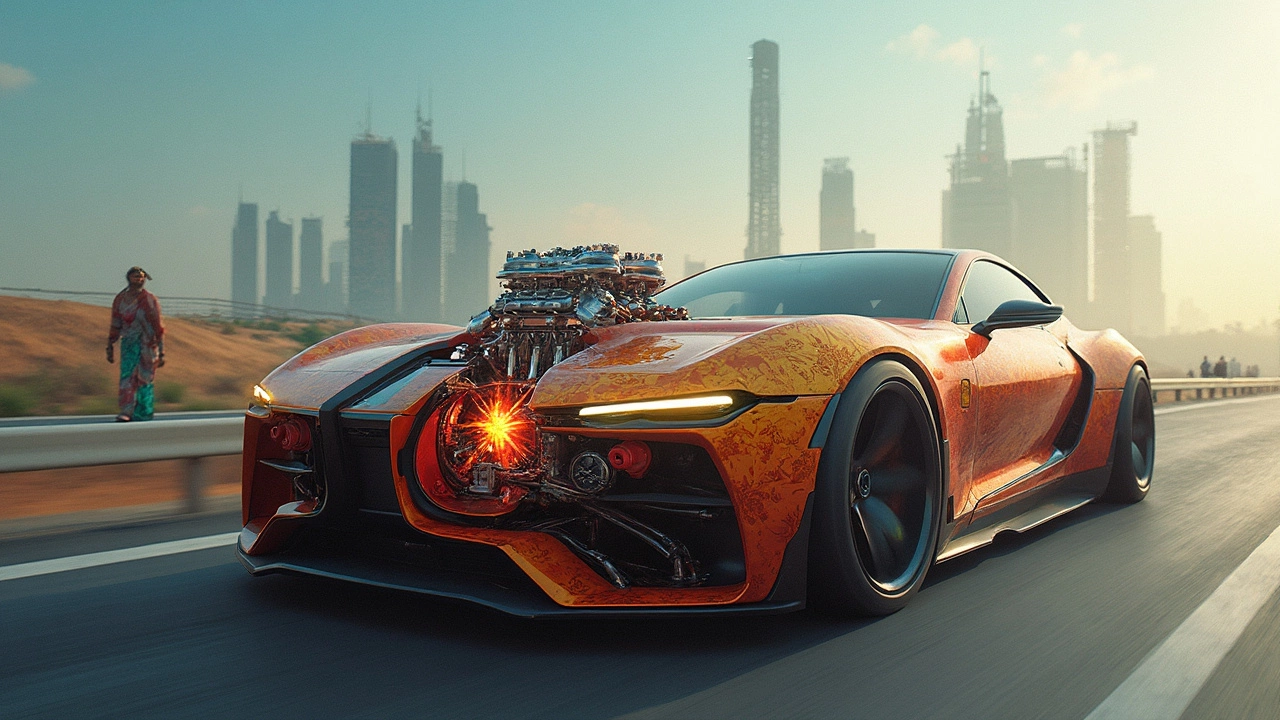 Feb, 21 2025
Feb, 21 2025
Ever popped the hood to check what really keeps your engine cool? Car radiators are pretty much the unsung heroes here, ensuring your car doesn't overheat even during those endless traffic jams or adventurous road trips. So, you might be thinking, 'Are these things still relevant with all the tech advancements happening?' Well, funny enough, they’re still very much in the game, proving that oldies can still be goodies.
Radiators might not be the flashiest part of your car, but they sure do their job well. What do they do, you ask? Simply put, they keep your engine running at the right temperature by dissipating heat. Coolant flows through them, exchanging heat with the air that passes by, thanks to your car's motion and the fan system. Easy, right? Without this, your engine would throw a fit and leave you stranded.
- The Basics of Car Radiators
- How Radiators Have Evolved
- Alternative Cooling Technologies
- Importance of Radiator Maintenance
- Future of Radiators in Cars
The Basics of Car Radiators
When it comes to the inner workings of a vehicle, the car radiator plays a top-notch role in keeping things from overheating. At its core, the radiator is part of the cooling system designed to protect the engine from getting too hot, which could lead to serious damage if left unchecked.
How Does It Work?
The basic idea is simple: liquid coolant circulates through the engine, picking up heat along the way. It then heads to the radiator, where the heat is transferred to the air as the coolant moves through thin metal fins. These fins allow the heat to disperse more effectively, aided by airflow from either the car's forward motion or a fan, depending on the situation.
Key Components
- Inlet and Outlet Tanks: Allow hot coolant to enter and cooled liquid to exit.
- Core: The main body where the actual heat exchange happens, made up of tubes and fins.
- Cooling Fans: Help draw air through the core when the vehicle isn't moving fast enough to generate sufficient airflow.
Car radiators haven't changed much in function, but they've evolved in terms of design and materials. Modern radiators often use aluminum for its lightweight and efficient thermal conductivity. Plastic tanks are common too, cutting down on weight and cost.
"Radiators are essential to vehicle reliability, preventing engines from overheating while improving efficiency and performance.” — Auto Journal Review
Keeping It Healthy
Regular maintenance of the radiator is crucial for longevity. Flushing the coolant system, checking for leaks, and ensuring that the fins are clean of debris can prevent a lot of headaches. After all, nobody wants to end up on the side of the road with an overheating engine.
One fun fact is that some high-performance cars have multiple radiators to handle the extra heat generated. Cars aren't just about speed; it's about keeping that speed under control without burning up.
How Radiators Have Evolved
Radiators have come a long way since they first started showing up in cars. Back in the day, they were big, clunky hunks of metal, mainly made out of brass or copper. These materials were great for heat transfer but not so much for your car's weight, making them a heavy load to carry around.
Fast forward to the present, and most car radiators are made from aluminum and plastic. Aluminum is not only lighter but also does an excellent job of cooling things down. This shift in materials means cars can be lighter and more fuel-efficient without sacrificing the effectiveness of their cooling systems.
The Tech Boost
Technology has also given car radiators a healthy boost. Modern radiators now come with advanced design features, like multi-layer cores, which let them handle more heat and cool down quicker. This is crucial, especially with today's engines generating more power and, you guessed it, more heat than ever. Some newer designs even use high-tech stuff like computer simulations to streamline air and coolant flow, making the cooling process even better.
Dual Purpose Designs
The roles of radiators have also expanded. They're not just for engine cooling anymore; they help cool transmission fluids and even the air conditioning system in some cases. This makes modern vehicles more efficient by how they use space and manage heat.
While electric vehicles (EVs) are another story in themselves, even they haven’t completely done away with radiators. Though the cooling needs are a bit different, systems still use heat management strategies akin to what traditional radiators provide, ensuring they run smoothly and safely.
Interesting, right? These vehicle cooling systems have evolved to keep up with the fast pace of automotive changes. So next time you're stuck in traffic, just remember that a lot of thought and innovation goes into keeping your engine cool.

Alternative Cooling Technologies
Okay, so you're on the hunt for what's new in the world of car cooling, huh? While radiators are still reigning champs, there are some fresh kids on the block trying to share the spotlight. Let’s see what’s out there.
Electric Cooling Systems
With the rise of electric vehicles (EVs), cooling systems have had to evolve. These systems use electric coolants that are more efficient and require less space, ideal for compact EV designs. Electric starters boost the cooling process without relying on engine power, making it a game-changer for cars looking to cut down on gas usage.
Heat Pipes and Phase Change Materials
Heat pipes and phase change materials are not just buzzwords. They’re actually part of innovative cooling solutions. Heat pipes transfer heat through the rapid movement of liquid-vapor, almost like magic. Phase change materials, on the other hand, absorb heat as they transition from solid to liquid, effectively keeping temps in check.
Why They Haven't Replaced Radiators—Yet
As cutting-edge as these techs seem, radiators remain rock-solid because they’re simple and highly effective with modern cars. Plus, they’re easy to maintain and cost-effective, which is a big win for both manufacturers and drivers. These newer systems add some serious tech cool factor but keep in mind they can also drive up the cost and complexity.
Will these alternative cooling technologies finally dethrone the trusty radiator? Only time will tell, but for now, radiators are still warming our hearts—pun intended.
Importance of Radiator Maintenance
Keeping your car radiator in top shape is crucial for avoiding annoying and potentially costly problems on the road. Whether you're dealing with last-minute morning commutes or planning long road trips, maintaining the car radiator can keep your engine cool and your mind at ease.
Why Regular Checks Matter
Why bother with constant radiator maintenance? Well, think of it this way: ignoring it is like skipping dentist visits and ending up with toothaches. The radiator's main job is to prevent the engine from overheating. Over time, dirt and debris can clog up the radiator, seriously messing with its cooling efficiency. Routine checks and cleanings ensure that coolant flows smoothly and keeps temperatures in check.
"Neglecting your radiator can lead to engine overheating, which is one of the top reasons for vehicle breakdowns," says auto expert James Renwick, author of Car Care Made Simple.
What You Can Do
- Check Coolant Levels: First things first, make sure your coolant levels are adequate. A quick glance monthly can save you from bigger headaches later.
- Inspect for Leaks: Keep an eye out for any suspicious green, orange, or pink spots under your car—these could mean a leak in your system.
- Flush the Radiator: It's a good idea to flush your radiator and refill with fresh coolant every couple of years to prevent corrosion and buildup.
- Clear Debris: Regularly clean off leaves, bugs, and dirt from your radiator grill to improve air flow and cooling capability.
Regular radiator maintenance helps prolong your car's life while dodging unexpected repairs. A little time spent can save both money and stress on the road. Now isn't that worth it?

Future of Radiators in Cars
So, what lies ahead for car radiators? Even with all the buzz about electric vehicles and futuristic tech, car radiators aren't going to fade away just yet. In fact, they're evolving alongside the new tech to fit right in with the times.
The Role of Radiators in Hybrid and Electric Cars
You'd think electric cars don't need them since they don't have traditional engines, right? But nope, even electric vehicles have systems that require cooling, like batteries and electric motors. Companies are innovating radiator designs to fit these new cooling demands.
Radiators for electric vehicles are more about temperature management than anything else. They're designed to ensure that batteries and components stay at their optimal temperature for efficiency and longevity.
Innovations in Radiator Technology
With materials science moving quickly, expect radiators to become more efficient and lighter. High-tech materials mean better durability and performance, which is a win-win for car makers and owners alike.
Some car manufacturers are already experimenting with radiators that adapt to driving conditions, tweaking airflow and cooling efforts on the go. This tech ensures maximum efficiency without driver intervention.
Fuel Economy and Environmental Impact
Improving radiator technology helps with fuel economy too. Efficient cooling means less energy wasted, translating to better mileage. As for eco-friendliness, less fuel burned means fewer emissions, which is great news for the planet.
| Technology | Impact |
|---|---|
| Adaptive Radiator Systems | Enhanced cooling efficiency |
| Lightweight Materials | Improved fuel economy |
So, while the look and materials might change, the trusty radiator will keep hanging around, just getting smarter and more efficient with time.